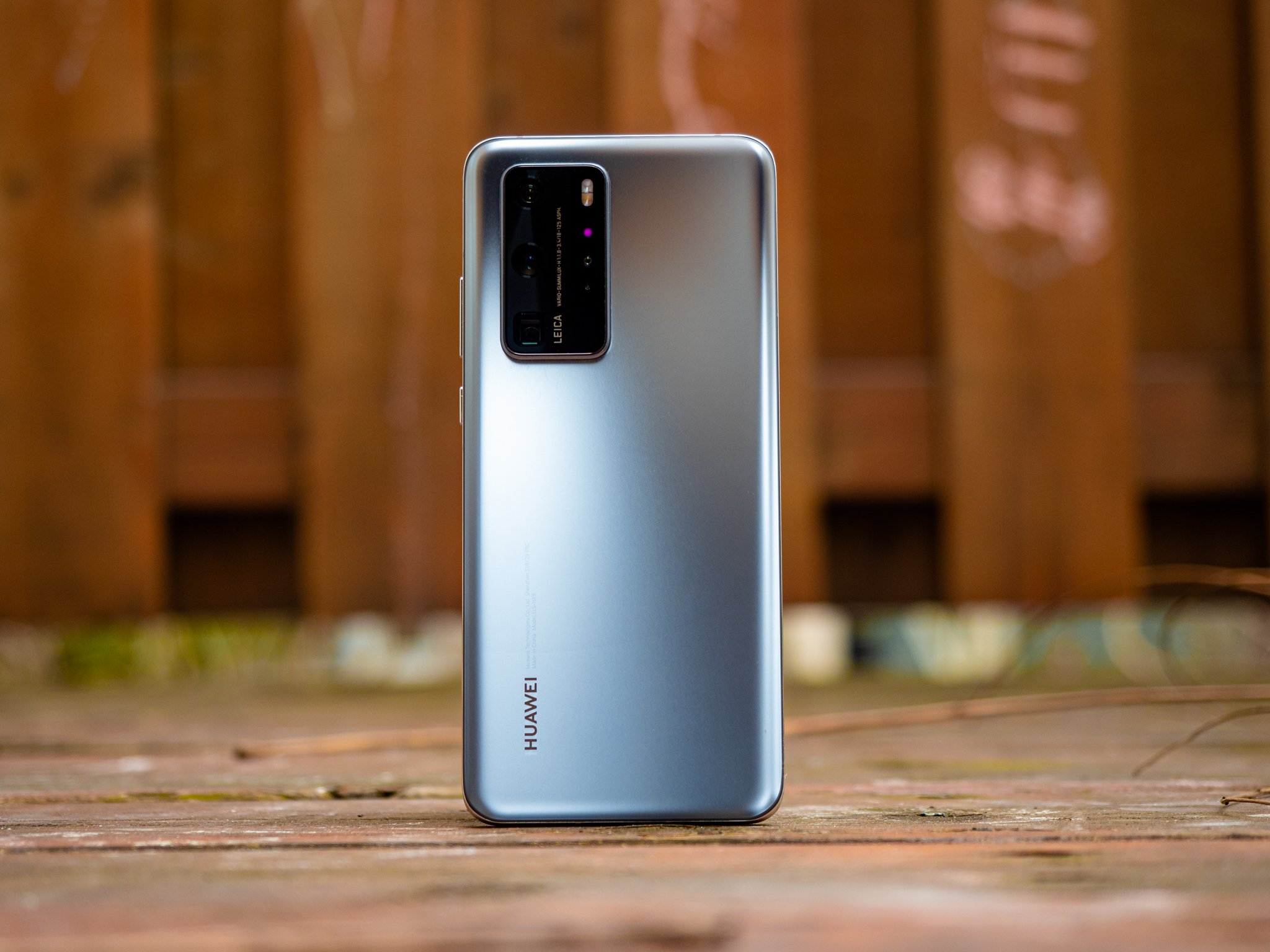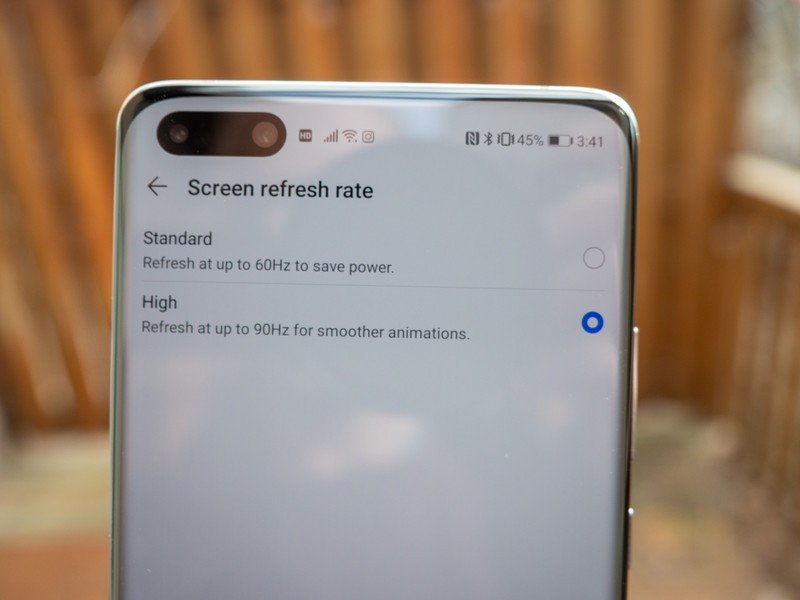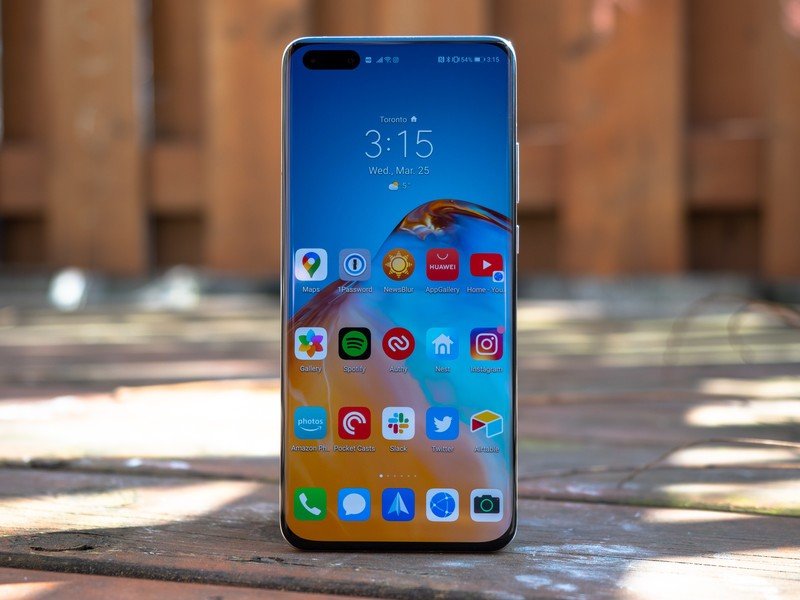Huawei's P40 series is here to revolutionize mobile photography

The last 12 months have been tumultuous for Huawei. The Chinese manufacturer was put on the U.S. Entity List over a year ago, effectively preventing U.S. organizations from dealing with the device maker.
Huawei plugged away nevertheless, launching the Mate 30 series without Google Mobile Services, instead offering its own alternative — Huawei Mobile Services. That turned out to be a poor substitute for the lack of services like Gmail, Chrome, YouTube, and others, Huawei is positioning its AppGallery as a viable alternative to the Play Store.
Huawei is now offering its take on the 2020 flagship with the P40 series, but the launch is overshadowed by the coronavirus. As the world battens down and goes into lockdown to prevent the spread of a virus that has already claimed over 21,000 lives, there's little to no enthusiasm for new smartphones. But the show must go on, and here we are.
Let's kick things off with the basics. Huawei is launching three phones in the P40 series today — the P40, P40 Pro, and the P40 Pro Plus. The P40 is available in exciting new color options — Ice White, Black, and Deep Sea Blue — and the P40 Pro is sold in Silver Frost and Blush Gold. Both phones feature a matte texture at the back that contrasts well with the aluminum frame.
Huawei P40 Pro hands-on preview: I can see clearly now
The P40 Pro Plus, meanwhile, features a ceramic back, with Huawei noting that it compressed ceramic beads at intense pressure and put them in a kiln for five days at 1,500 degrees Celsius to make the back as tough as sapphire while still providing a reflective surface akin to diamond. The P40 Pro Plus is available in black and white color options. Huawei clearly put a lot of thought into the materials this time, and it shows in the final product.

The big change at the front is the addition of a hole-punch camera that has two camera modules. They're much more obtrusive than the cutout from the P30 series, but this time you're getting two 32MP sensors with autofocus and 4K video. Huawei also says you'll get decent bokeh out of the front cameras.
Be an expert in 5 minutes
Get the latest news from Android Central, your trusted companion in the world of Android
Huawei isn't changing a lot of things on the display, with all three models featuring Full View edge-to-edge OLED panels. The welcome addition this time around is the switch to 90Hz refresh rate, bringing them on par with the rest of the industry. The P40 has a 6.1-inch screen, with the P40 Pro and P40 Pro Plus featuring larger 6.58-inch panels. Like last year, resolution is still at FHD+.
Of course, imaging continues to be the differentiator for Huawei, and this time it went with a sensor that's 40% larger than the one used in the P30 series. All three phones in the P40 series feature a large 1/1.28 inch 50MP RYYB sensor, and it's safe to say that Huawei will be the brand to beat in this area.
Huawei already had one of the best cameras on Android, and it is taking things to a new level with the P40 series.
Let's get into some more detail: the P40 also has an 8MP telephoto lens with 3x optical zoom and a 16MP wide-angle shooter, with both the main and zoom lenses featuring OIS. The P40 Pro is much more interesting, with the 50MP main camera joined by a 40MP Cine sensor — the same as the Mate 30 Pro — and a 12MP f/3.4 telephoto lens with 5x optical and 50x hybrid zoom. The P40 Pro also has a ToF module.
The P40 Pro Plus shares the same primary and wide-angle lenses, and you get an 8MP f/4.4 telephoto lens with 10x optical zoom. And yes, you'll get the same ToF module on the P40 Pro Plus as well. Huawei is once again touting unmatched stabilization for the telephoto lens and the ability to take shots at ISO 51200, and 4K video at 60fps. It's not just the hardware either; Huawei is making a lot of tweaks to its software processing algorithms to deliver better photos in any lighting condition.

Let's talk about the hardware on offer: all three phones are powered by the Kirin 990 platform, and in select markets they'll offer 5G connectivity. There's liquid cooling to bring down the thermals, Wi-Fi 6 connectivity, Bluetooth 5.1, and NFC. You can get up to 12GB of RAM on the P40 Pro and P40 Pro Plus, and up to 512GB of UFS 3.0 storage module. There's a new in-screen fingerprint module that has a 30% larger recognition area and is 30% faster.
The standard P40 comes with a 3800mAh battery, whereas the P40 Pro and Pro Plus feature a 4200mAh battery. All three devices offer 40W fast charging, and Huawei is now making the switch to 27W wireless charging — although you'll have to use its own charger to hit those speeds.
Like the Mate 30 series, the main drawback with the P40 series is there are no Google services available out of the box. Huawei says it is turning AppGallery into a viable alternative to the Play Store in Western markets, but there's still a lot of work left to do on that front. For more on what it's like to use the P40 Pro, read our detailed preview:
Huawei P40 Pro hands-on preview: I can see clearly now
The P40 series is debuting in China, and will make its way to global markets shortly. Only time will tell whether Huawei manages to get millions of customers outside China to buy phones that lack Google services, but it is making a pretty strong case with the cameras. What are your thoughts on the P40 series?

Harish Jonnalagadda is Android Central's Senior Editor overseeing mobile coverage. In his current role, he leads the site's coverage of Chinese phone brands, networking products, and AV gear. He has been testing phones for over a decade, and has extensive experience in mobile hardware and the global semiconductor industry. Contact him on Twitter at @chunkynerd.
